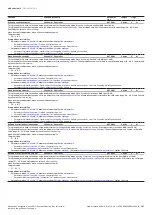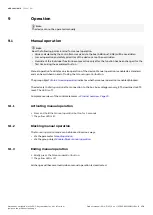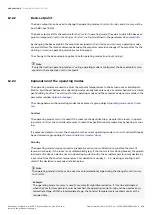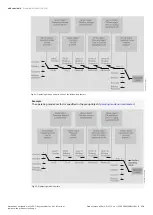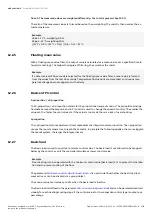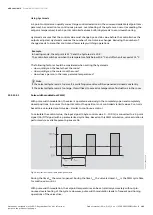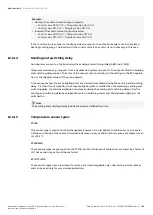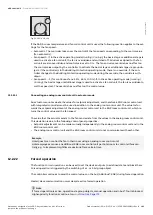
ABB i-bus® KNX
PLANNING AND APPLICATION
Case 3: The measured values are weighted differently – the total is greater than 100 %
The ratio of the measured values is formed based on their weighting. The result is then used as the ac-
tual temperature.
Example
Value 1: 21 °C; weighting 80 %
Value 2: 24 °C; weighting 40 %
((21 °C × 0.8) + (24 °C × 0.4)) / (0.8 + 0.4) = 22 °C
12.2.5
Floating mean value
With a floating mean value filter, the output value is calculated as a mean value over a specified time in-
terval (smoothing). The higher the degree of filtering, the smoother the result.
Example
If a time interval of 60 seconds is selected for the floating mean value filter, a mean value is formed
from the values from the last 60 seconds. Temperature fluctuations are smoothed, continuous tem-
perature changes become apparent with a delay.
12.2.6
Basics of PI control
P-proportion / xP-proportion
The P-proportion / xP-proportion stands for the proportional range of control. The proportional range
fluctuates around the setpoint, and in PI control is used to change the speed of control. The smaller the
value set, the faster the control reacts. If the value is too small, there is a risk of overshooting.
I-proportion
The I-proportion (also readjustment time) represents the integral control proportion. The I-proportion
causes the room temperature to reach the setpoint. In principle the following applies: the more sluggish
the overall system, the larger the integral time is.
12.2.7
Basic load
The basic load is used to specify a minimum control value. The basic load is not allowed to be dropped
below by the control, even if the controller calculates a lower control value.
Example
Floor heating is to be operated with the minimum control value (basic load) 5 % to protect the installa-
tion and to prevent cooling of the floor.
Minimum control value for basic load > 0
is used to define whether the basic load is al-
ways active or can be activated via a group object.
The control value can decrease to 0 % when the basic load is inactive.
The basic load is defined in the parameter
Min. control value (basic load)
and can be parameterized indi-
vidually for each heating/cooling stage if the control value for the respective control type is output as a
percentage.
Product manual | EN-US | VC/S 4.x.1 | 2CDC508220D0211 Rev. B
178
Note about navigation in the PDF: Key combination 'Alt + left arrow'
jumps to the previous view/page




